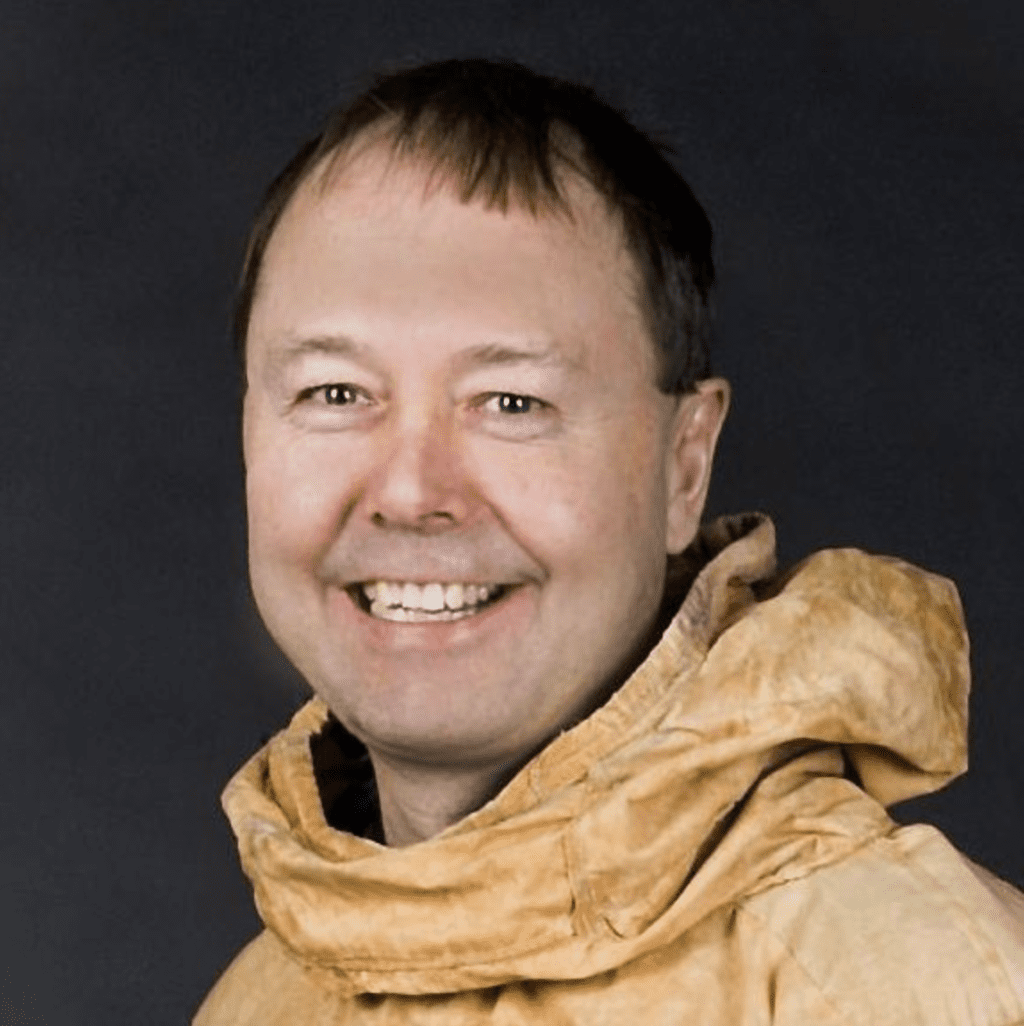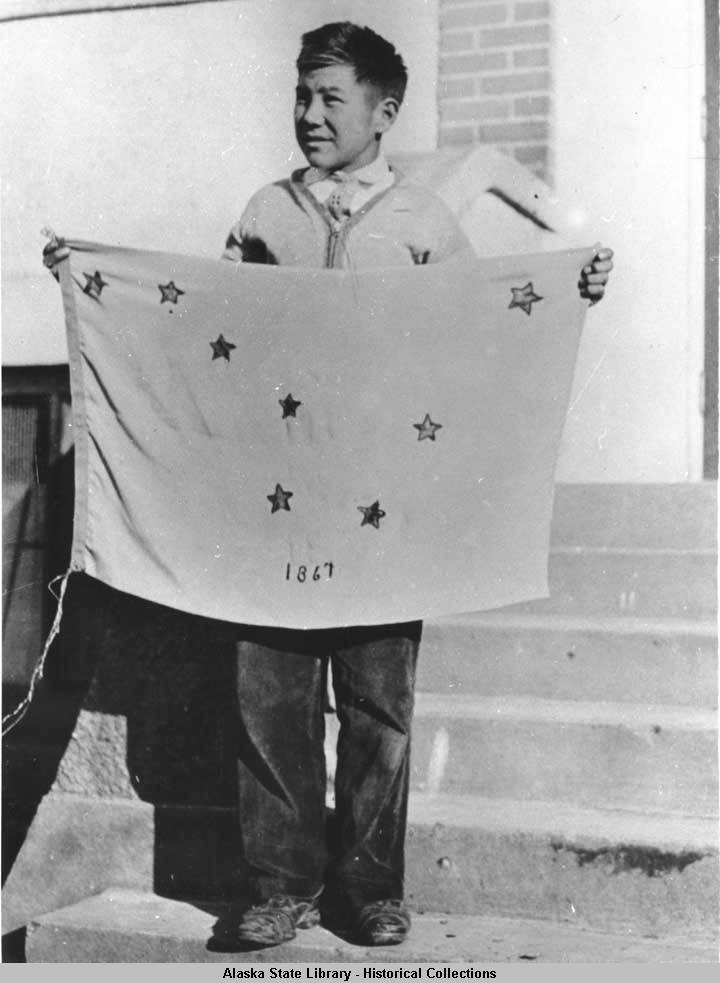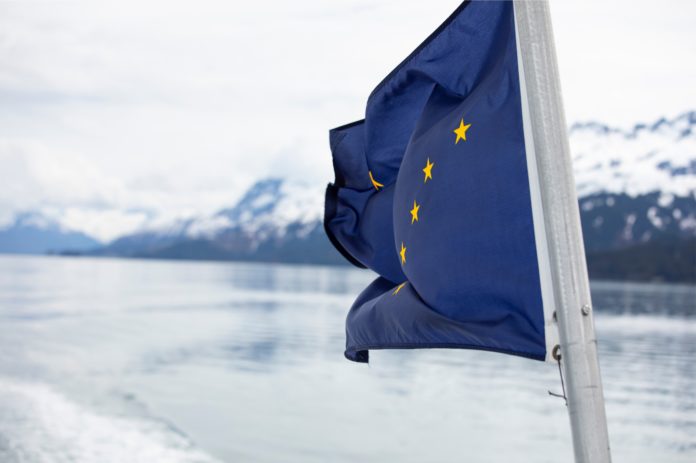Nearly a century after young Benny Benson won a contest to design Alaska’s flag researchers led by a retired police detective with a passion for genealogy have brought to light the true story of the celebrated teenager.

“In a sense, I have followed in his footsteps,” said Michael iqyax̂ Livingston, the research team leader, whose work with the Aleutian Pribilof Islands Association focuses on community health services.
“I have known of Benny Benson since my first grade at Cold Bay Elementary School in 1963, when I stood by my desk, faced the Alaska flag, put my right hand over my left chest, and learned how to sing the Alaska Flag song,” Livingston said.
The son of Annabelle Elsie Donaldson and Sgt. Robert Lee Donaldson, who wed in Cordova after World War Two, Livingston has many of aunts, uncles and cousins who live in Cordova.
Research work into the real history of Benson, which stretched out over a decade, “was all pretty darn fascinating, taking different unexpected twists and turns,” he said. “Finding out that Benny was Unangax instead of Alutiiq was probably the most surprising,” he said. “It is easy to make assumptions and believe what we are told and what is written in history books.”
Benson was born in Chignik, on the Alaska Peninsula, in 1912. His mother, Tatiana, was born and raised in Unalaska, and his grandparents were from Unalaska, so Benny was a member of the Qawalangin Tribe of Unalaska. Benny’s great grandparents were from Amlia Island, which is near Atka, so Benny was a descendant of the Native Village of Atka, said Livingston.
After his mother died and their family home was destroyed by a fire, Benson’s father sent the boy to the Jesse Lee Home at Unalaska. The boy moved to Seward when the Methodist board school was relocated there and it was at Seward that he won the competition to design the Alaska state flag in 1927. For his efforts he received a watch and a $1,000 scholarship. Benson died of a heart attack in 1972, when he was 59 years old.
Livingston said that “All these years, we assumed that Benny was Alutiiq. Around 10 years ago, one of my colleagues mentioned finding Benny in the 1920 US Federal Census in Chignik. He should not have been there. The record appeared to indicate that his mother Tatiana was born in Unga. Unga is Unangax̂ territory. This launched our long search.
“Over the years, I visited Chignik and spent some time in the area where Benny was born, learning more about him, visiting the cemetery, finding some Bensons there. I lived and worked in Unalaska from 1978 to 1981 where Benny attended the Jesse Lee Home from about 1916 to about 1925. My family has land in Seward where Benny lived from about 1925 to 1930. I have sailed by Ugiashak Island on the Alaska Marine Highway ferry Tustumena; Benny and his father fox farmed on Ugiashak Island. I have visited Seattle where Benny later moved to. I attended my first year of high school at age 13 at Kodiak High School where Benny later moved to and is buried. I was in Kodiak close to the time that Benny was passing away,” he said
Livingston met his cousin, Iris O’Brien Caldentey, at the Nuuciq Spirit Camp on Hitchinbrook Island around 2003, where he was teaching kayak building and she was teaching skin sewing. “At the time, we thought we were probably related, but several years later we found out that we are cousins through DNA tests with 23andMe,” he said. “Iris and I are third cousins; we share second great grandparents. We have stayed in touch over the years. In 2018, we visited Nuuciq during Visitor’s Day.”
Another interesting point that researchers confirmed in advance of the 100-year anniversary of Benny’s flag raising in 2027 is that the work on Benson’s family tree is not done. “There are still plenty of mysteries about Benny, he said.

“Each time the state of Alaska told me to jump through a hoop, I would jump through the hoop. But then they found a taller hoop, and I would jump through that. When I began this project, I expected to be done with it in months. It took years, but it was worthwhile. But I should point out that our research is not done. Still, plenty of digging and learning; so much that we don’t know about Benny. He won against all odds, and his history should be honored and celebrated.
In advance of the centennial, Livingston said now is the time to form the Benny Benson Centennial Committees, to start forming contests with pries for seventh through 12th graders. “We do not need another flag,” Livingston said. He did recommend drawings of what Benson looked like in seventh grade when he won the contest, paintings, and full-sized bronzed statues of Benson holding his flag.
The’ Aleutian Pribilof Islands Association operates mostly from grants, but had no specific grant to research Benson’s story, he said. Instead, they used grants to support library and archives projects such as the Institute of Museum and Library Services.
“Most of the deep research was done by people who enjoy family tree research during our own private time. We do it because we love it. The largest expense was the certified translation of Russian church records. The state of Alaska required these translations. They were very much worth it because they greatly strengthened our research.”















